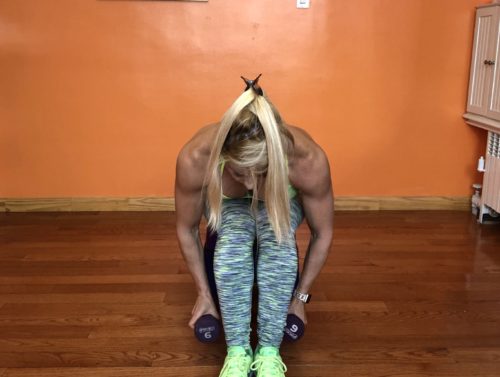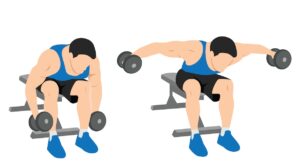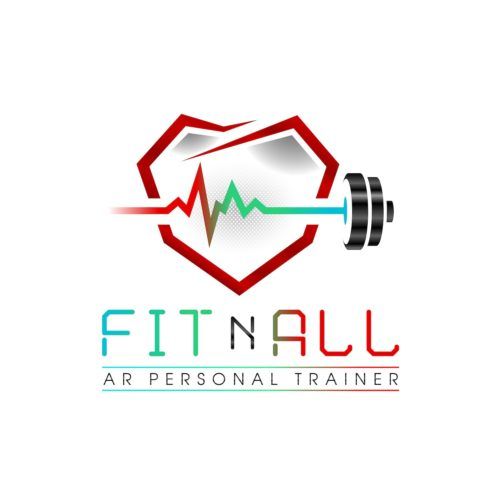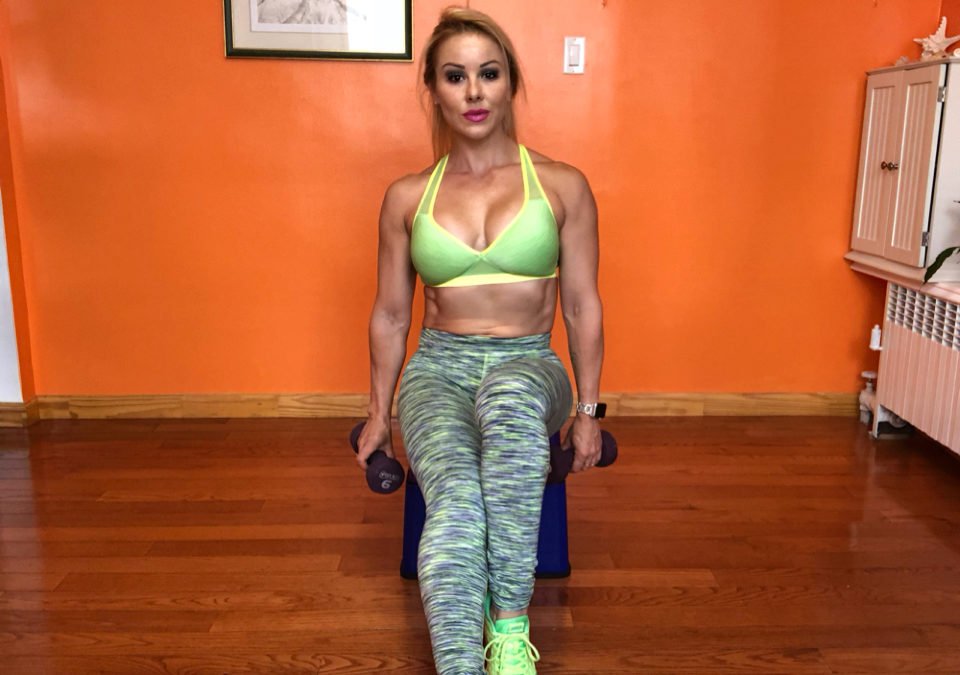If you want great-looking shoulders, you must work the deltoid muscles at different angles to stimulate various parts. You not only should do exercises for the front and lateral parts of the shoulders but you should work the back of the shoulders. A wonderful delt exercise (for the back of the shoulder) is the bent-over rear delt raise, which can be performed standing (standing bent-over rear delt raises) or seated (like we are doing here).
Let’s take a deeper look at the seated bent-over rear delt raise. Below we’ll cover the following:
- Muscles involved in bent-over rear delt raises
- Benefits associated with the bent-over rear delt raise
- How to properly do bent-over rear delt raises
- Common mistakes when performing bent-over rear delt raises
- Shoulder exercises to complete your shoulder workout
- Video on how to do bent-over rear delt raises
What Muscles Do Bent-Over Rear Delt Raise Work?
The shoulder has several muscles that attach to the scapula, humerus, and clavicle. The largest shoulder muscle is the deltoid, which consists of the anterior, middle, and posterior fibers. There are other muscles — the supraspinatus, infraspinatus, teres minor, and subscapularis — that form the rotator cuff and are vital in the dynamics of shoulder movement. Other muscles involved in shoulder movement are the supraspinatus, coracobrachialis, serratus anterior, pectoralis, trapezius, latissimus dorsi, teres major, and rhomboid major among others.
Besides engaging the lateral delts slightly, bent-over rear delt raises mainly work the upper posterior chain muscles which include rear deltoids, rhomboids, and trapezius.
- Rear Delts – located in the posterior part of the deltoids. This is a shoulder area that, sometimes, gets neglected, creating muscle imbalances.
- Trapezius – triangular muscles extending over the back of the neck and shoulders
- Rhomboids – muscles located in the upper back in between the scapulas

Benefits of Seated Bent-Over Rear Delt Raises
- Strength: They help increase overall shoulder strength as the rear delts can assist in other movements. Strong shoulders are important for everyday living and movements involving pressing, pulling, and rotating your arms.
- Hypertrophy: Every muscle that you work grows with proper technique and nutrition. Face pulls help fill up the back of the shoulders.
- Aesthetics: They sculpt rounder, more defined shoulders, and traps, helping you develop a beautifully sculpted upper body.
- Shoulder Health: The shoulder area is one of the most mobile spheres in the body. The wide range of motion permits great rotation, abduction, and adduction. Simultaneously, this versatility makes the shoulder area more prone to injury. Working out the, often neglected, rear delts, you maintain shoulder mobility, and stability, and prevent injury.
- Stability: Seated bent-over rear lateral raises keep your body more stable as you engage in the movement while sitting down, allowing you to zero in that posterior area.
- Isolation: By seating, you don’t waste a lot of energy trying to maintain the proper alignment so you can concentrate solely on stimulating the back of your shoulder.
- Corrective: This shoulder exercise helps deal with imbalances and prevent injuries as most people concentrate on the anterior and lateral heads of the deltoid and the chest, not the rear deltoids.
- Better Posture: Working out the upper posterior chain muscles helps keep you more straight and avoid a “hunched forward” appearance.
- Practicality: The only thing you need to do bent-over rear delt raises is a step, bench, or chair and a pair of dumbbells.
- Versatile: You can perform different variations of seated bent-over rear lateral raises. You can raise both arms at the same time, one arm at a time, or alternate arms.
How to Perform Bent-Over Rear Delt Raises

- Get a pair of dumbbells and sit on the end of a bench/ step.
- Your legs should be together and the dumbbells behind your calves.
- Keep your shoulders back and your back straight as you bend down.
- Get the dumbbells and face the palms of your hands towards each other while keeping your arms slightly bent at the elbows.
- Lift the dumbbells straight to the side until both arms are parallel to the floor and squeeze your shoulder blades together.
- Keep your torso forward and stationary.
- Exhale as you lift the weights and keep contracting at the top for a second or so.
- Lower the dumbbells slowly back to the starting position.
- Repeat.
Seated Bent-Over Raises Mistakes
Now that you know how to perform seated bent-over raises, pay attention to your form so you can avoid the most common mistakes associated with this exercise:
- Targeting other muscles: If you don’t have the proper form (bend your arms too much or point your elbows down), you are performing seated bent-over rear lateral raises incorrectly. You are supposed to feel the rear delts, not your back or biceps.
- Lifting very heavy loads: The rear deltoid is a small area and if you put too much weight, you may end up using momentum and/or working other muscle groups to lift the load.
- Rounding your back: Keep your back straight so you don’t overstress or injure your back.
The Seated Bent-Over Raise Video
Rear Delt Workout
Your delt workout can be completed with the following exercises:
As you can see, the seated bent-over raise is a wonderful shoulder exercise. It offers numerous benefits associated with shoulder health, mobility, hypertrophy, and isolation. Now that you know the correct form to properly perform seated bent-over raises, you can avoid the most common mistakes associated with this exercise and complement your shoulder workout.
Remember, whether you want to lose weight, tone your body, gain strength, or increase muscle size, all muscles must be trained – Lift, Burn more Fat, Get Stronger, and Live Healthier!
To a Fitter Healthier You,
The Fitness Wellness Mentor



